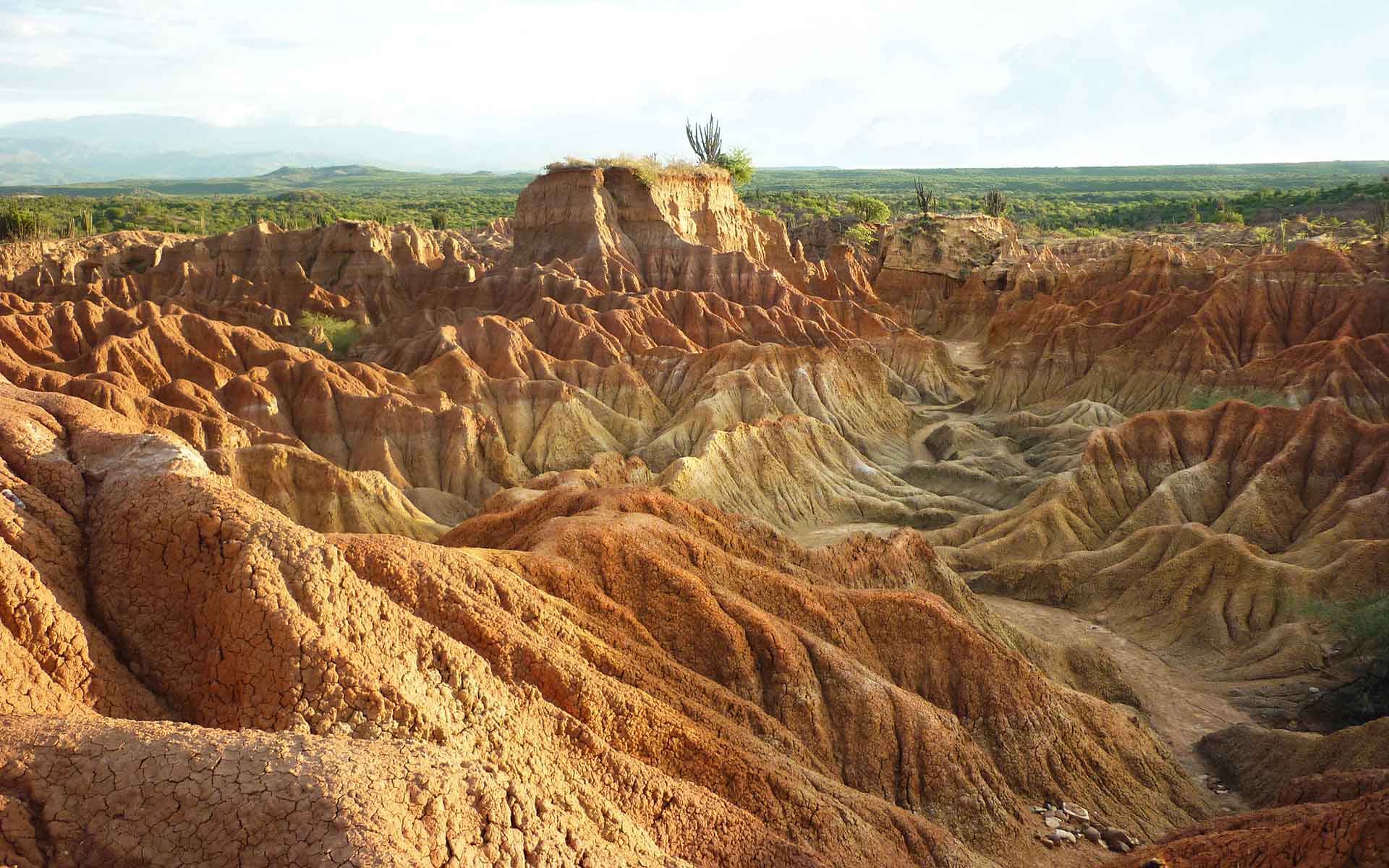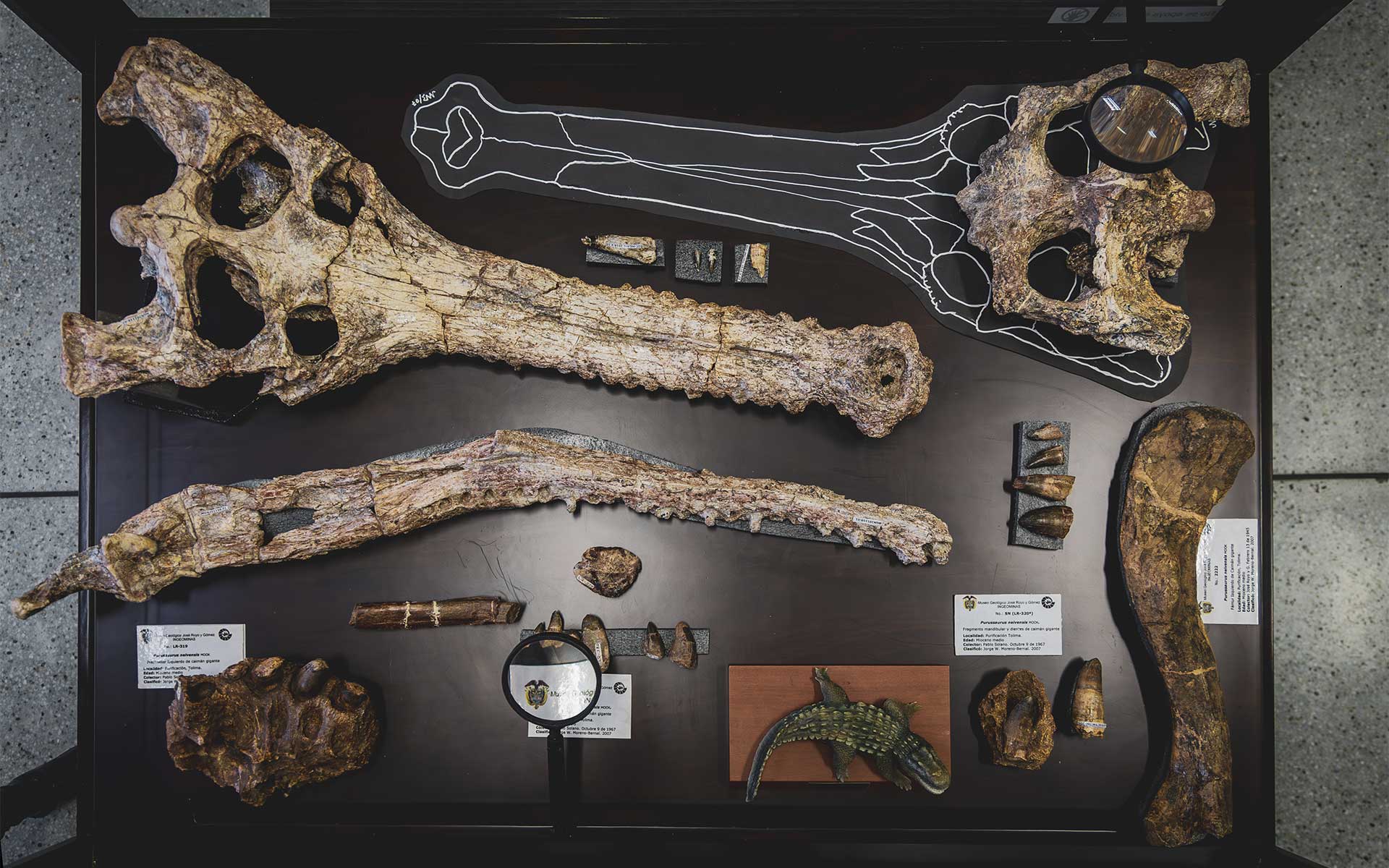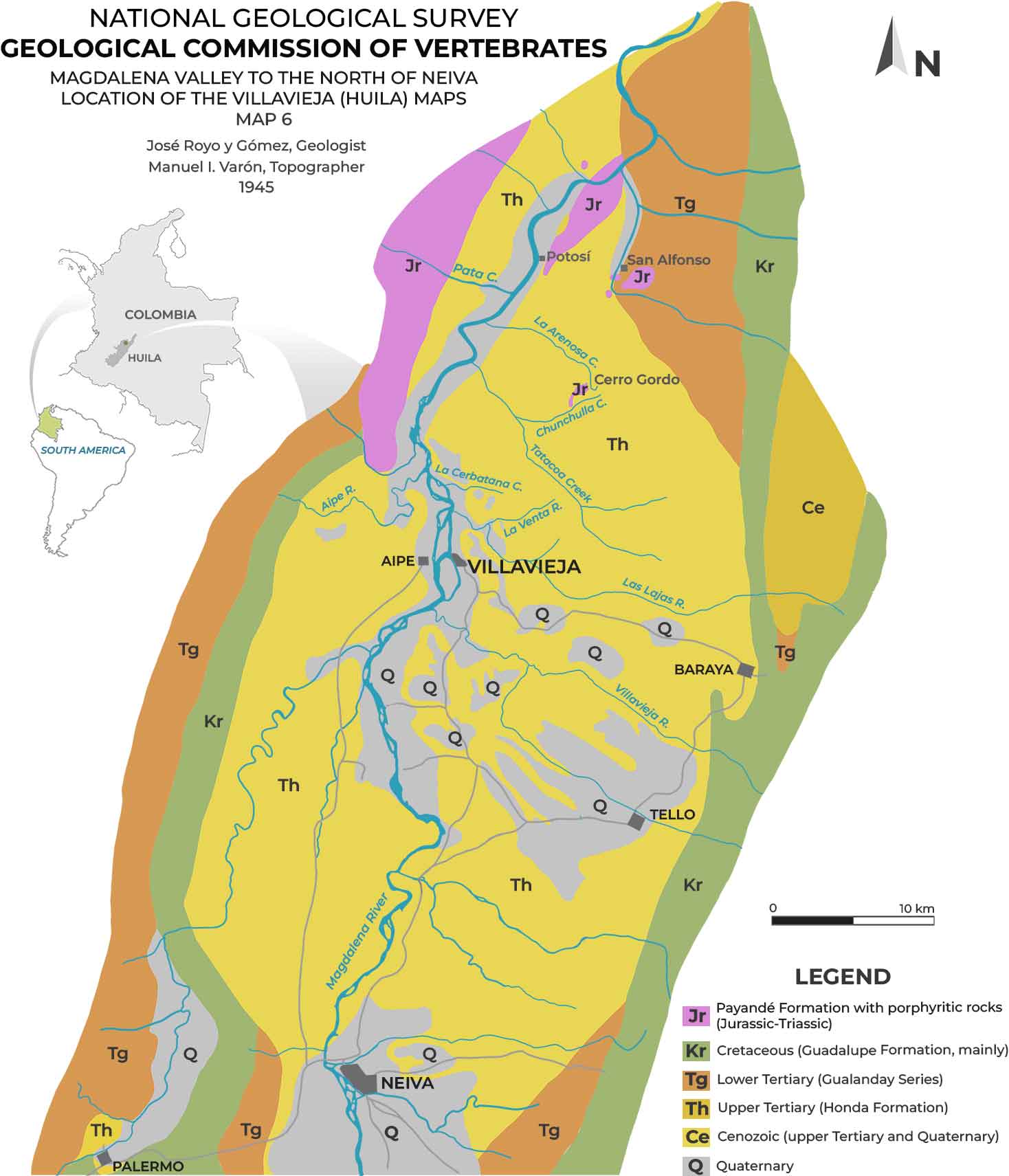
The ‘La Tatacoa Desert’: the iconic badland landscape of the La Venta Konzentrat-Lagerstätte. Some levels of this variegated middle Miocene rock succession are remarkably fossiliferous.
Geological Period
Miocene
Main geological interest
Paleontology
Stratigraphy and sedimentology
Location
La Venta, Villavieja, Huila, Colombia
03°15’32”N, 075°10’03”W
The ‘La Tatacoa Desert’: the iconic badland landscape of the La Venta Konzentrat-Lagerstätte. Some levels of this variegated middle Miocene rock succession are remarkably fossiliferous.
A Konzentrat-Lagerstätte that hosts one of the most diverse and exuberant biomes from an extinct neotropical rainforest.
The paleontological record of the La Venta Konzentrat-Lagerstätte provides valuable insights into the response of the biome to the middle Miocene Climatic Transition. Its remarkable fossil preservation is evidence of the rich biodiversity of endemic faunal groups prior to the Great American Biotic Interchange, and its geological history exemplifies the intricate paleobiogeographic and tectonostratigraphic evolution of northern South America. Additionally, its characteristic mammalian assemblage is the basis for the Laventan Stage and the corresponding geochronologic unit, the Laventan Age (13.5 to 11.8 Ma), which is also utilized as a Land Mammal Age for South America (Kay et al., 1997; Montes et al., 2021; Carrillo, 2023).
- Geological description
The La Venta Konzentrat-Lagerstätte documents the astonishing biodiversity of one of the most fascinating neotropical biomes, through its abundant fossil concentrations. Its variegated fine- to medium-grained rock succession, part of the Honda Group, accumulated in dynamic fluvial and alluvial environments between ~15.9 Ma and ~10.5 Ma (Kay et al., 1997; Spradley et al., 2019; Carrillo, 2023).
In addition to plant remains and ichnofossils, over 190 different fossil taxa have been identified, including 50 new genera and 102 new species. The fossil fish assemblage documents the establishment of the rich extant fauna of the Orinoco and Amazon River basins, and the reptilian fossil remains give evidence of specialized adaptations. The Laventan mammalian fauna consists of 34 new fossil species of rodents, primates, bats, and sirenians, 26 new species of extinct native ungulates and xenarthrans, and 20 new taxa of oldest representatives of some extant metatherians (Kay et al., 1997; Defler, 2019; Carrillo, 2023).
Its emblematic “badlands” scenery and the development of excellent outcrops over an extensive area, results from the interplay between lithology, long-term weathering, and the dry conditions induced by the orographic rain shadow of Los Andes (Dill et al., 2020; Montes et al., 2021).
- Scientific research and tradition
This Konzentrat-Lagerstätte has been the scientific-research focus of multinational paleontological expeditions, including the 1944-1951 “Commission of Vertebrates”, the 1977-1987 “Kyoto University-INGEOMINAS”, the 1985-1992 “Duke University-INGEOMINAS” (Kay et al., 1997), and several 21st-century explorations. There are about 200 scientific publications, many involving international and highly regarded researchers and institutions (Carrillo, 2023).vv
- Reference
Carrillo, J.D. (ed.) (2023) ‘Neotropical palaeontology: the Miocene La Venta biome.’, Geodiversitas, 45(2), p. Articles 3, 6, 10, 12, 13, 15, 18, 25, and 26.
Defler, T. (2019) ‘La Venta: A Miocene Mammalian Community from Colombia’, in T. Defler (ed.) History of Terrestrial Mammals in South America: How South American Mammalian Fauna Changed from the Mesozoic to Recent Times. Cham: Springer International Publishing (Topics in Geobiology), pp. 199–219. Available at: https://doi.org/10.1007/978-3-319-98449-0_10.
Dill, H.G. et al. (2020) ‘The “badland trilogy” of the Desierto de la Tatacoa, upper Magdalena Valley, Colombia, a result of geodynamics and climate: With a review of badland landscapes’, CATENA, 194, p. 104696. Available at: https://doi.org/10.1016/j.catena.2020.104696.
Kay, R. et al. (1997) Vertebrate Paleontology in the Neotropics. The Miocene Fauna of La Venta, Colombia. Washington D.C.: Smithsonian Institution Press.
Montes, C. et al. (2021) ‘A Middle to Late Miocene Trans-Andean Portal: Geologic Record in the Tatacoa Desert’, Frontiers in Earth Science, 8. Available at: https://www.frontiersin.org/articles/10.3389/feart.2020.587022.
Spradley, J.P., Glazer, B.J. and Kay, R.F. (2019) ‘Mammalian faunas, ecological indices, and machine-learning regression for the purpose of paleoenvironment reconstruction in the Miocene of South America’, Palaeogeography, Palaeoclimatology, Palaeoecology, 518, pp. 155–171. Available at: https://doi.org/10.1016/j.palaeo.2019.01.014.
- Author(s)
Marianela Vargas Anaya.
Servicio Geológico Colombiano.
José Enrique Arenas.
Servicio Geológico Colombiano.
Laura Mora Rojas.
Servicio Geológico Colombiano.
Manuel Gómez Guerrero.
Servicio Geológico Colombiano.
Luis Francisco Melo Rojas.
Servicio Geológico Colombiano.
Victoria Elena Corredor Bohórquez.
Servicio Geológico Colombiano.
Catalina Suárez Gómez.
Instituto Argentino de Nivología, Glaciología y Ciencias Ambientales (IANIGLA).
Carlos Jaramillo.
Smithsonian Tropical Research Institute. USA.
Edwin Cadena.
Universidad del Rosario. Colombia.
Susana Salazar Jaramillo.
Universidad Nacional de Colombia.

